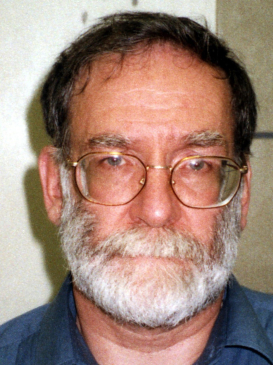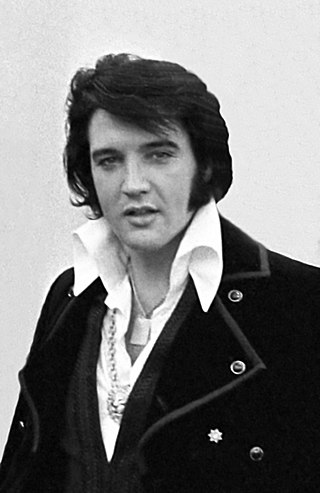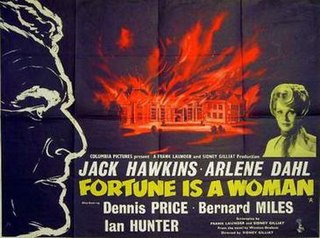Notable faked deaths
This section needs additional citations for verification .(June 2023) |
1st century
- Yohanan ben Zakkai faked his death to escape from the Roman army. [5] : 27
14th century
- Joan of Leeds was a nun who faked her death to escape from a convent. [14]
18th century
- Timothy Dexter was an eccentric 18th-century New England businessman probably best known for his punctuationless book A Pickle for the Knowing Ones . However, he is also known for having faked his own death to see how people would react. He paid his wife and members of his family with instructions to act. After the funeral he caned his wife for her poor acting by not looking sufficiently saddened at his passing. [15] [16]
- Georgy Gruzinsky, a Russian nobleman, faked his death in 1798 to avoid a court sentence. He reappeared when he was effectively pardoned in 1802, and actually died in 1852.[ citation needed ]
20th century
- Grace Oakeshott, British women's rights activist, faked her death in 1907 to get out of her marriage. She lived the remainder of her life in New Zealand and died in 1929. [17]
- Violet Charlesworth, a British fraudster, faked her death in 1909 to escape payment of debts. She was sentenced to three years in prison and released in 1912. [18]
- C. J. De Garis, an Australian aviator and entrepreneur, faked his death in 1925 and became the subject on an eight-day nationwide search, before being spotted on a ship in New Zealand. He committed suicide in 1926. [19]
- Aleister Crowley, English occultist and author, faked his death in 1930 in Portugal aided by Portuguese poet Fernando Pessoa, and then appeared three weeks later publicly in Berlin. Crowley actually died in 1947.[ citation needed ]
- Alfred Rouse, an English murderer, set his own car on fire in 1930 with a different man inside, in an attempt to convince the police that Rouse had died in the vehicle. He was arrested and convicted, and executed in 1931. The identity of the victim remains unknown.[ citation needed ]
- Aleksandr Uspensky, Russian government official, faked his own suicide in 1938 in an attempt to avoid capture by Soviet authority during the Great Purge. He was captured in 1939 and executed in 1940.[ citation needed ]
- Ferdinand Waldo Demara, American fraudster, faked his death in 1942. He actually died in 1982.[ citation needed ]
- Juan Pujol García, Spanish spy, faked his death from malaria in Angola in 1949, with help from the British spy agency MI5. He lived the remainder of his life in Venezuela and died in 1988.[ citation needed ]
- Lawrence Joseph Bader, an American salesperson, disappeared in 1957 and was presumed dead. He was found alive five years later assuming the identity of "John 'Fritz' Johnson", working as a local TV personality in Omaha, Nebraska. He either had amnesia of his life or was a hoaxer. He actually died in 1966, aged 39.[ citation needed ]
- Ken Kesey, American novelist, faked his suicide in 1965. He died in 2001.[ citation needed ]
- John Allen, a British criminal and murderer, faked his own death in 1966 to avoid prosecution for crimes he had committed. [20] Allen actually died in 2015.
- John Stonehouse, a British politician who in November 1974 faked his own suicide by drowning to escape financial difficulties and live with his mistress. One month later, he was discovered in Australia. Police there initially thought he might be Lord Lucan (who had disappeared only a few weeks earlier, after being suspected of murder) and jailed him. [21] Sent back to Britain, he was convicted and sentenced to seven years in prison for fraud. [22]
- Jerry Balisok, an American professional wrestler, successfully convinced the FBI that he had died in 1978 in the Jonestown Massacre to avoid fraud charges, assuming the identity "Ricky Allen Wetta". Several decades later, Wetta was arrested and convicted for attempted murder, at which point he was determined to be Balisok. [23] Balisok actually died in 2013 while in prison for an unrelated crime. [24]
- Audrey Marie Hilley, an American murderer, jumped bail in 1979 and lived under the assumed identity of Robbi Hannon. In 1982, under a different alias, she announced the death of Hannon. She was captured and imprisoned, and died in 1987.[ citation needed ]
- Sukumara Kurup, an Indian who faked his own death by placing the corpse of his murder victim in his car and setting it on fire in 1984. The face of victim was charred beforehand to prevent identification. He did it to collect the money insured on his name. The police identified the victim and his accomplices were put on trial. He evaded arrest and is in a fugitive list of Interpol and Kerala Police.
- David Friedland, a former New Jersey senator, faked his own death via scuba-diving accident in 1985 while awaiting trial on racketeering charges. [25] In December 1987, he was arrested by officials in Maldives, where he had been working as a scuba dive master and had posed in scuba gear for a picture post card. He eventually was returned to the United States and served nine years in prison. Friedland died in 2022.
- Charles Peter Mule, a Louisiana policeman, was charged with 29 counts related to the rape and molestation of several young girls in 1988. After being released on bail, Mule left his truck alongside a bridge and sent a note to his police department. His claimed suicide was ruled inconclusive after police failed to find a corpse in the river, and a hiker reported to police that a man had opened fire on him without warning and whose description matched Mule's. After the case was profiled on the television show Unsolved Mysteries , Mule was captured. [26]
- Philip Sessarego, British author, faked his death by car bomb in Croatia in 1991 for unknown reasons, and lived under an assumed name for the next 17 years, with his own family only learning he was alive when he appeared in a 2001 TV interview. He died of an accidental poisoning in 2008. [27]
- Francisco Paesa, an agent of Centro Nacional de Inteligencia, the Spanish secret service, faked a fatal cardiac arrest in 1998 in Thailand, after having tricked Luis Roldán, known for being the general of the Spanish Civil Guard when a big scandal of corruption arose in 1993, into stealing all the money that Roldán had previously stolen in that case. He appeared in 2004. [28] During these years, he opened an offshore company, which was exposed thanks to the leaking of the Panama Papers.
- Friedrich Gulda, Austrian pianist, falsely announced his death in 1999 to create publicity for a following "resurrection concert". He died in 2000.
21st century
- John Darwin, a former teacher and prison officer from Hartlepool, England faked his own death on 21 March 2002 by canoeing out to sea and disappearing. His ruse fell apart in 2006 when a simple Google search revealed a photo of him buying a house in Panama. Darwin and his wife, Anne, were arrested and charged with fraud, deception, and money laundering related to the life insurance payout of £250,000. [29] They were each sentenced to more than six years in prison, and all their property sold, and all their money taken, including his pension, to repay. [30] [31]
- Clayton Counts, American musician, reported himself dead on his website in 2007 as a prank. He actually died in 2016.[ citation needed ]
- Samuel Israel III, an American hedge fund manager who was facing 22 years in prison for financial malfeasance and fraud, left his truck and a suicide note at a bridge in an attempted fake suicide in April 2008. Authorities suspected that his suicide was faked since, among other things, passersby reported that a car had picked someone up on the bridge from near Israel's abandoned car. Two years were added to Israel's sentence for obstruction of justice, which he is currently serving. [1] : 1–12, 38–39
- Marcus Schrenker, a financial manager from Fishers, Indiana, US, was charged with defrauding clients, and in 2009 attempted to fake his own death in a plane crash to avoid prosecution. The plane crash was quickly discovered to be staged, and Schrenker was captured two days later, after he sent an e-mail message to a friend about his plans. [32] [5] : 62 In October 2010, after pleading guilty to state charges, Schrenker was sentenced to 10 years in prison and was fined $633,781. [33]
- Luke Rhinehart, American author, an email was sent out in August 2012 to 25 of Rhinehart's friends, informing them of his death. This was actually a hoax and a prank played by Rhinehart himself. The reactions of Rhinehart's 25 friends ranged from sorrow to gratitude and amusement. [34]
- Chandra Mohan Sharma, Indian activist, murdered a homeless man, placed the body in his own car, and set the car on fire, in an attempt at faking his death in 2014 to get out of his marriage. He was captured by police later that year. [35]
- Arkady Babchenko, a Russian journalist living in Ukraine who in 2018 faked his own assassination, which was widely reported in the international press, as part of a sting operation aimed at exposing an agent sent to kill him. Babchenko's appearance at a press conference the day after his "death" caused an international sensation. [36]
- Nicholas Alahverdian, an American child welfare advocate and convicted sex offender from Rhode Island, purported to have died in February 2020, was found alive by police in Scotland in January 2022. [37]
- Kim Avis, a busker and market trader from Inverness, Scotland and a local celebrity there. In 2019, he was reported dead in California but in the 2024 BBC Two documentary, Disclosure: Dead Man Running reporter and Inverness local Kim Avis uncovered evidence that Avis faked his death to evade charges of sexual assault. [38]










